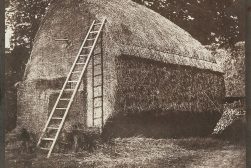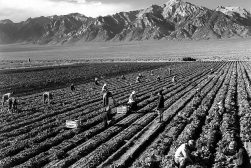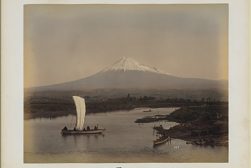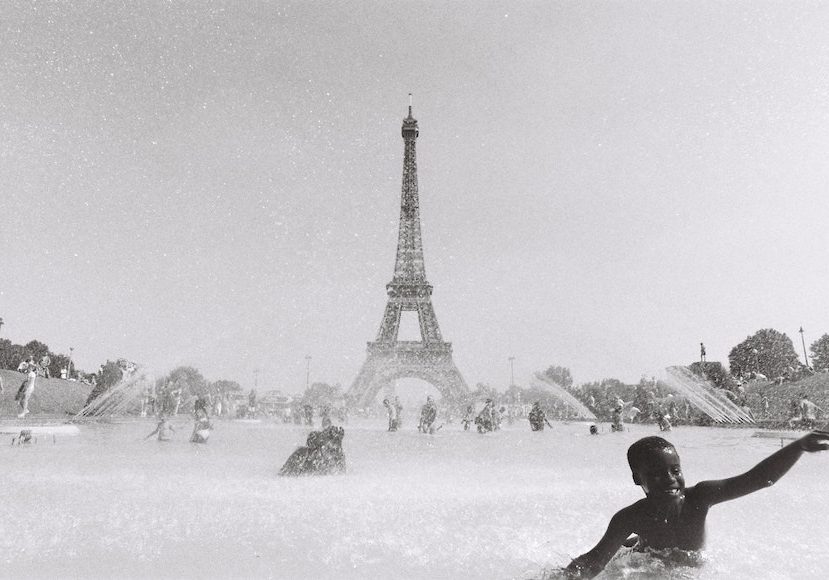
51 Famous French Photographers You Should Know
Explore the legacies of renowned French photographers and delve into their iconic works that have shaped the world of photography.
France has a rich and illustrious history in the world of photography, producing some of the most influential and celebrated photographers of all time.
From the early pioneers who captured the essence of 19th-century Paris to contemporary visionaries pushing the boundaries of the medium, French photographers have left an indelible mark on the art form.
In this article, we will explore the lives and works of some of the most famous French photographers, each with a unique perspective and a distinct contribution to the world of visual storytelling.
From the iconic street photography of Henri Cartier-Bresson to the surreal dreamscapes of Man Ray, these artists have shaped the way we perceive the world through their lens.
Join us on a journey through time and imagery as we delve into the captivating world of French photography and the extraordinary talents that have emerged from this culturally rich nation.
51 Famous French Photographers You Should Know in 2024
Henri Cartier-Bresson
Henri Cartier-Bresson (1908-2004), often hailed as the father of modern photojournalism, is renowned for his ability to capture decisive moments in everyday life.
With a keen eye for composition and an innate sense of timing, Cartier-Bresson’s work reflects the essence of human experiences.
His iconic photograph “Behind the Gare Saint-Lazare,” showcasing a man leaping over a puddle, perfectly exemplifies his concept of the “decisive moment.”
Born in 1908, Cartier-Bresson co-founded Magnum Photos, a renowned cooperative agency for photojournalists.
His work continues to influence generations of photographers, inspiring them to capture the fleeting beauty of life.
Robert Doisneau
Robert Doisneau’s (1912-1994) charming and heartwarming images encapsulate the spirit of post-war Paris.
His ability to capture candid, everyday scenes with a touch of whimsy and nostalgia has left an indelible mark on the world of photography.
One of his most famous photographs, “The Kiss at City Hall,” captures a young couple locked in a passionate embrace amidst a bustling Parisian street.
Born in 1912, Doisneau’s work reflects his love for human connection and the stories that unfold within ordinary moments, making him a beloved figure in the world of photography.
Brassaï
Brassaï (1899-1984), a Hungarian-French photographer, is celebrated for his evocative black and white images that capture the nocturnal beauty of Paris.
Born in 1899, he is best known for his series “Paris by Night,” which offers an intimate and poetic glimpse into the city’s after-hours world.
His work often explores themes of sensuality, intimacy, and the surreal, making him a key figure in the Surrealist movement.
Through his lens, the streets of Paris transform into a dreamlike realm where shadows and light dance in harmony.
Louis Daguerre
Louis Daguerre (1787-1851), a pioneer of photography, is credited with developing the daguerreotype process, one of the earliest photographic techniques.
Born in 1787, his groundbreaking work paved the way for modern photography by capturing images on polished silver-plated sheets.
The daguerreotype process marked a significant leap in photographic technology and allowed for the creation of highly detailed and intricate images, revolutionizing visual documentation.
How Much Do You REALLY Know About Photography?! 🤔
Test your photography knowledge with this quick quiz!
See how much you really know about photography...

Guy Bourdin
Guy Bourdin (1928-1991), a trailblazer in fashion photography, is known for his provocative and surreal imagery.
Born in 1928, Bourdin’s work challenges conventional notions of beauty and fashion, often blurring the lines between art and commerce.
His photograph “Charles Jourdan Shoe” is a prime example of his bold and imaginative style, incorporating elements of storytelling and unexpected visual twists.
Bourdin’s work continues to inspire contemporary photographers to push the boundaries of creativity within the realm of fashion.
Willy Ronis
Willy Ronis (1910-2009), a French photographer, captured the essence of everyday life in post-war France with a sense of humanism and empathy.
Born in 1910, his work often focused on the joys and struggles of ordinary people, celebrating their resilience and connections.
His photograph “Le Nu Provençal” exemplifies his ability to blend the personal and universal, portraying a carefree moment of nudity in the picturesque landscape of Provence.
Nadar
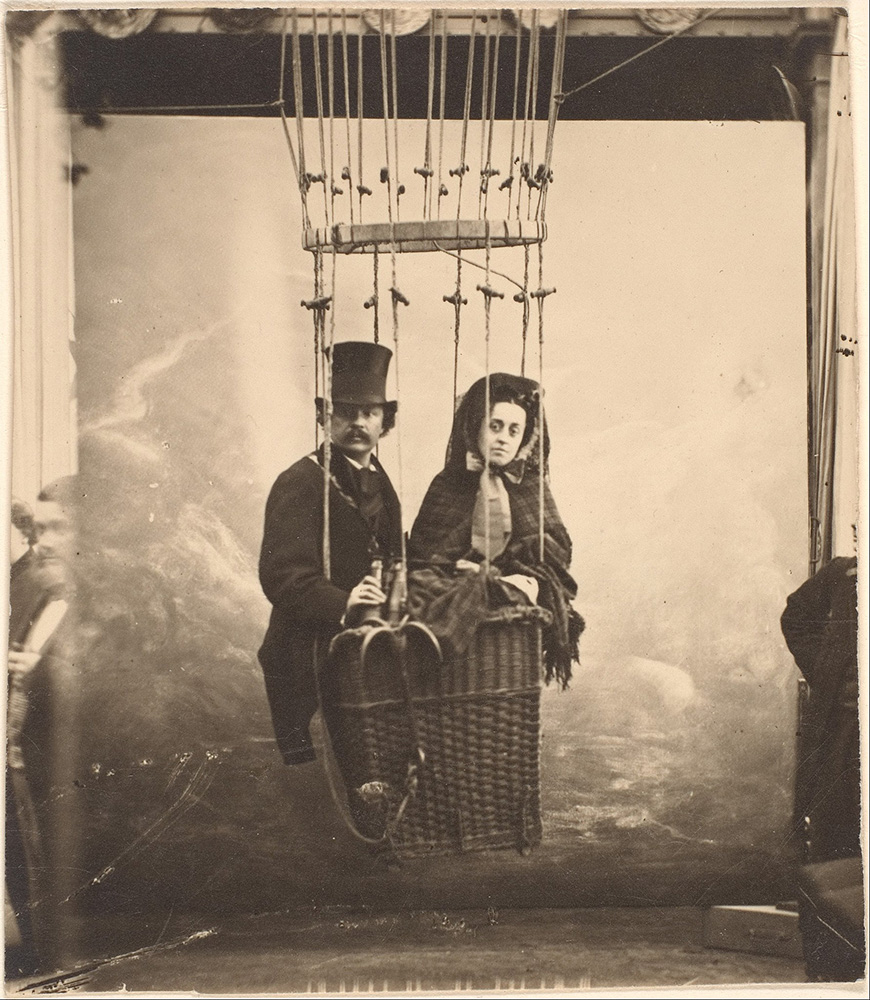
Credit: Nadar, CC0, Metropolitan Museum of Art, via Wikimedia Commons
Nadar (1820-1910), the pseudonym of Gaspard-Félix Tournachon, was a versatile and pioneering French photographer and caricaturist.
Born in 1820, he was a central figure in the cultural and artistic scene of 19th-century Paris.
Nadar’s portrait photography captured the likenesses of many influential figures of his time, including writers, artists, and politicians.
His work is characterized by a sense of intimacy and psychological depth, offering a glimpse into the personalities of his subjects.
Nicéphore Niépce
Nicéphore Niépce (1765-1833) is credited with producing the world’s first permanent photograph in 1826, using a process known as heliography.
Born in 1765, Niépce’s pioneering experiments laid the foundation for modern photography.
His photograph “View from the Window at Le Gras” is a testament to his ingenuity and determination, capturing a scene from his estate in France.
Niépce’s contributions to photography marked the beginning of a transformative era in visual communication.
Marc Riboud
Marc Riboud’s (1923-2016) photographs are characterized by their humanistic approach and global perspective.
Born in 1923, Riboud’s work spans decades and continents, capturing the spirit of various cultures and historical moments.
His iconic photograph “The Flower Child,” taken during an anti-war protest in Washington, D.C., has become a symbol of the 1960s counterculture movement.
Riboud’s dedication to capturing the beauty and complexity of the world has left an enduring legacy.
Raymond Depardon
Raymond Depardon, a French photographer and documentarian, has covered a wide range of subjects, from global conflicts to intimate rural landscapes.
Born in 1942, Depardon’s work often explores the intersection of personal narratives and larger societal themes.
His series “Giscard d’Estaing Campaign” offers a behind-the-scenes look at a French presidential campaign, while “La Ferme du Garet” delves into the daily lives of a farming family.
Depardon’s storytelling prowess and empathy shine through in his evocative imagery.
Édouard Boubat
Édouard Boubat’s (1923-1999) photographs are imbued with a sense of poetic simplicity and emotional resonance.
Born in 1923, his work often focuses on themes of love, childhood, and the beauty of the everyday.
His photograph “Child with Dove,” capturing a young boy holding a dove in his hands, is a poignant representation of innocence and connection.
Boubat’s ability to distill profound emotions within his frames has made his work a timeless source of inspiration.
Jacques Henri Lartigue
Jacques Henri Lartigue (1894-1986), a French photographer and painter, is celebrated for his candid snapshots of Belle Époque society and his fascination with motion and movement.
Born in 1894, Lartigue’s early photographs offer a unique glimpse into the lives of the upper class and the exhilaration of activities like auto racing and aviation.
His playful and energetic images capture a sense of joy and adventure that defined the early 20th century.
Elliott Erwitt
Elliott Erwitt’s photography is characterized by his wit, humor, and a keen eye for the absurdities of everyday life.
Born in 1928, Erwitt’s work spans a wide range of subjects, from portraits to street scenes.
His photograph “California, 1955” captures a scene of dogs and their owners at a beach, showcasing his ability to capture both human and animal interactions with a touch of irony.
Erwitt’s photographs often reveal the unexpected moments that shape our world.
Eugène Atget
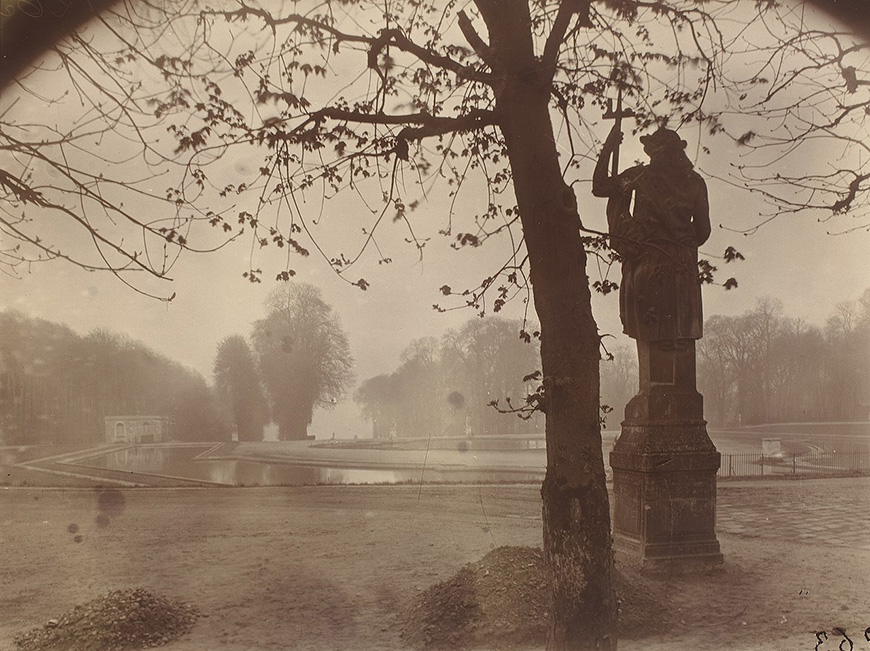
Credit: Eugene Atget, National Gallery of Art, CC0, via Wikimedia Commons
Eugène Atget (1857-1927), a pioneer of documentary photography, dedicated his life to capturing the architecture and street scenes of Paris.
Born in 1857, his extensive body of work provides a historical record of the city’s transformation over time.
Atget’s meticulous attention to detail and his ability to evoke a sense of nostalgia make his photographs a treasure trove of cultural and architectural heritage.
His images of empty streets, charming courtyards, and storefronts offer a glimpse into a bygone era, preserving the essence of Paris before modernization took hold.
Yann Arthus-Bertrand
Yann Arthus-Bertrand is known for his stunning aerial photographs that capture the Earth’s beauty and fragility from above.
Born in 1946, Arthus-Bertrand’s work often focuses on environmental issues and the interconnectedness of all life on our planet.
His project “Earth from Above” features captivating images of landscapes, wildlife, and human activities seen from a unique perspective.
Arthus-Bertrand’s photography serves as a powerful reminder of the importance of preserving our natural world.
Bruno Barbey
Bruno Barbey’s (1941-2020) photography reflects his extensive travels and deep appreciation for diverse cultures.
Born in 1941, Barbey’s work encompasses photojournalism, documentary photography, and street photography.
His photograph “May ’68, Place de l’Odéon” captures a moment of civil unrest during the student protests in Paris, showcasing his ability to capture the pulse of a historical moment.
Barbey’s images are marked by their spontaneity and his ability to capture fleeting emotions.
Étienne-Jules Marey
Étienne-Jules Marey (1830-1904) was a pioneering figure in the field of motion photography and cinematography.
Born in 1830, his innovative work contributed to the understanding of movement and chronophotography.
Marey’s experiments with capturing motion, such as his iconic image “Man Walking,” laid the groundwork for future developments in visual technology.
His contributions have had a profound impact on both scientific research and artistic expression.
Jean-Marc Bustamante
Jean-Marc Bustamante is a contemporary photographer known for his minimalist and abstract compositions.
Born in 1952, his work often blurs the line between photography and fine art, exploring themes of space, light, and perception.
Bustamante’s photographs challenge traditional notions of representation, inviting viewers to engage with the interplay between form and imagination.
Antoine Claudet
Antoine Claudet (1797-1867) was a pioneering figure in early photography, known for his innovations in portraiture and color processes.
Born in 1797, Claudet’s technical prowess led to advancements in daguerreotype photography.
His work in color processes, including the creation of diapositive positives, contributed to the evolution of color photography.
Claudet’s legacy lives on in his contributions to the development of photographic techniques.
Hippolyte Bayard
Hippolyte Bayard (1801-1887) is recognized as one of the inventors of photography and an early champion of the medium.
Born in 1801, Bayard created a photographic process known as direct positive printing, which allowed for the creation of multiple prints from a single negative.
His photograph “Self-Portrait as a Drowned Man” stands as a symbol of his wit and ingenuity, conveying a playful commentary on his own struggle for recognition in the world of photography.
Alexandra Boulat
Alexandra Boulat (1962-2007) was a fearless photojournalist known for her coverage of conflict zones and humanitarian crises.
Born in 1962, her work documented the human stories behind the headlines, highlighting the resilience of individuals in times of adversity.
Boulat’s photographs offer a glimpse into the lives of people affected by war, displacement, and social upheaval, emphasizing the importance of empathy and understanding in the face of global challenges.
Patrick Demarchelier
Patrick Demarchelier is a renowned fashion photographer whose work has graced the pages of leading fashion magazines and shaped the industry’s visual aesthetics.
Born in 1943, Demarchelier’s elegant and timeless style has made him a sought-after photographer for both editorial and advertising campaigns.
His ability to capture the essence of luxury and glamour has solidified his status as a key figure in the world of fashion photography.
Édouard Baldus
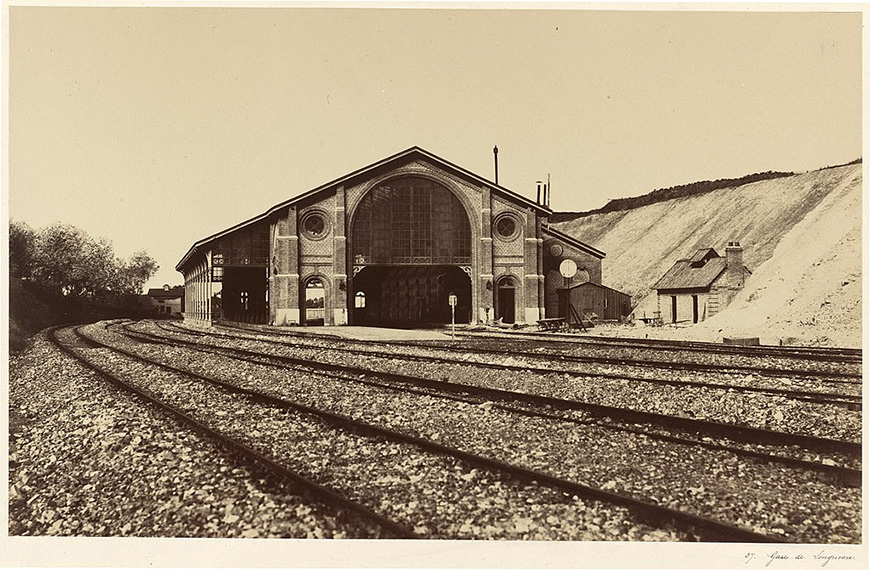
Credit: Eduard-Denis Baldus, National Gallery of Art, CC0, via Wikimedia Commons
Édouard Baldus (1813-1889) was a 19th-century French photographer known for his architectural and landscape photography.
Born in 1813, Baldus was a prominent figure in the field of albumen print photography, producing detailed and meticulously composed images of structures and urban environments.
His work contributed to the documentation of France’s historical and cultural heritage, leaving behind a visual legacy of the country’s architectural evolution.
Serge Brunier
Serge Brunier is an astrophotographer who has captured breathtaking images of celestial objects and astronomical phenomena.
Born in 1941, Brunier’s work reveals the beauty and mysteries of the universe, from sprawling galaxies to vibrant nebulae.
His photographs offer a unique perspective on the cosmos, inspiring awe and wonder at the vastness of space.
Laurent Biancani
Laurent Biancani is a contemporary photographer known for his innovative and experimental approach to image-making.
Born in 1967, Biancani’s work often blurs the boundaries between photography and other artistic mediums.
His conceptual and thought-provoking images challenge viewers to question the nature of reality and perception.
Christophe Beauregard
Christophe Beauregard’s photography explores the intersection of nature and humanity, often capturing moments of tranquility and reflection.
Born in 1973, his work showcases the beauty of the natural world and our connection to it. Beauregard’s images invite contemplation and serve as a reminder of the importance of preserving our environment.
Adeline Boutain
Adeline Boutain is a contemporary photographer whose work delves into themes of identity and representation.
Born in 1982, Boutain’s portraits and conceptual pieces challenge societal norms and offer a fresh perspective on individuality.
Her photography invites viewers to engage with the complexities of human experience and self-expression.
Jacques Bourboulon
Jacques Bourboulon is known for his sensuous and ethereal images that celebrate the female form.
Born in 1946, his work often blurs the line between art and erotica, capturing the beauty and allure of his subjects.
Bourboulon’s photographs exude a dreamlike quality, inviting viewers into a world of fantasy and elegance.
Jean-Christian Bourcart
Jean-Christian Bourcart is a documentary photographer whose work addresses social issues and urban landscapes.
Born in 1960, his photographs provide a raw and unfiltered view of contemporary society, shedding light on the challenges and complexities of human existence.
Bourcart’s images prompt reflection on the world we inhabit and the forces that shape it.
Laurent Benaïm
Laurent Benaïm is a portrait photographer known for his intimate and evocative images of individuals from various walks of life.
Born in 1967, his work captures the depth of human emotions and experiences, inviting viewers to connect with the stories behind the faces.
Benaïm’s portraits reveal the shared humanity that unites us all.
Félix Bonfils
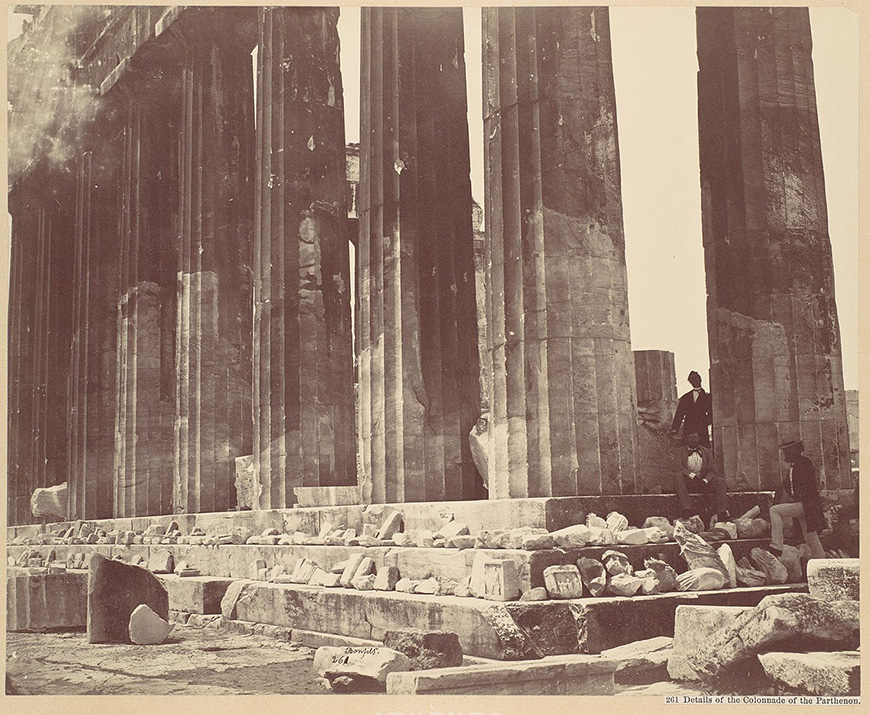
Details of the Colonnade of the Parthenon, Athens. Credit: Félix Bonfils, Metropolitan Museum of Art, via Wikimedia Commons
Félix Bonfils (1831-1885) was a 19th-century French photographer known for his extensive documentation of the Middle East and North Africa.
Born in 1831, Bonfils’s images offer a glimpse into the cultural richness and architectural heritage of the region.
His photographs provide a valuable historical record and a testament to the diverse cultures he encountered during his travels.
Christian Boltanski
Christian Boltanski (1944-2021) was a contemporary artist whose multimedia works often incorporate photography to explore themes of memory, mortality, and human existence.
Born in 1944, Boltanski’s conceptual approach challenges traditional notions of art and photography as tools for self-expression.
His work often prompts viewers to contemplate the passage of time, the fragility of life, and the interconnectedness of human stories.
Patrick Zachmann
Patrick Zachmann is a photojournalist and documentarian known for his compelling and humanistic approach to storytelling.
Born in 1955, his work has taken him to various corners of the world, capturing moments of both triumph and adversity.
Zachmann’s series “So Long China” chronicles the lives of Chinese immigrants in France, offering a nuanced perspective on cultural identity and displacement.
Réhahn
Réhahn is a photographer celebrated for his captivating portraits and stories of people from diverse cultures.
Born in 1979, his images provide a window into the lives of individuals from Vietnam and other parts of the world.
Réhahn’s commitment to building connections with his subjects is evident in the genuine and emotive quality of his photographs, fostering a sense of empathy and understanding.
Eric Lafforgue
Eric Lafforgue is a photojournalist known for his documentation of remote and often marginalized communities around the world.
Born in 1964, his work sheds light on lesser-known cultures and the challenges they face in a rapidly changing world.
Lafforgue’s photographs offer a platform for voices that might otherwise go unheard, highlighting the resilience and beauty of communities on the margins.
Olympe Aguado
Olympe Aguado (1827-1894) was a pioneering photographer of the 19th century, recognized for his contributions to early photographic processes and his experimentation with light and composition.
Born in 1827, Aguado’s work encompassed a wide range of subjects, from portraits to landscapes.
His technical innovations, including the use of collodion glass plate negatives, advanced the field of photography and expanded its creative possibilities.
Philippe Echaroux
Philippe Echaroux is a contemporary artist and photographer known for his innovative use of light and projection.
Born in 1983, his work often transforms ordinary spaces into immersive and enchanting visual experiences.
Echaroux’s “Painting with Lights” series involves projecting intricate designs onto natural landscapes, creating ephemeral artworks that challenge traditional notions of photography and representation.
Dani Olivier
Dani Olivier is a French photographer renowned for his unique approach to portrait photography, using light and projection to transform the human body into a canvas.
Born in 1969, his distinctive style has made a significant impact on the realm of contemporary portraiture.
Olivier’s work blurs the boundaries between photography, painting, and performance art, resulting in visually stunning and otherworldly images.
Mohamed Bourouissa
Mohamed Bourouissa is a multidisciplinary artist whose photography explores themes of urban life, social inequality, and cultural identity.
Born in 1978, his work often challenges preconceived notions and offers a critical perspective on societal structures.
Bourouissa’s series “Peripheries” captures the vibrant and complex reality of marginalized communities, inviting viewers to engage with the narratives that shape our cities.
Pierre de Vallombreuse
Pierre de Vallombreuse is a photographer and anthropologist known for his long-term projects that document indigenous and traditional communities around the world.
Born in 1962, his immersive approach fosters deep connections with the people he photographs, resulting in intimate and respectful portrayals.
Vallombreuse’s work serves as a testament to the diversity of human cultures and the importance of preserving heritage.
Antoine Fauchery
Antoine Fauchery (1823-1854) was a 19th-century photographer known for his collaborative efforts with fellow photographer Richard Daintree.
Together, they captured striking images of early colonial Australia, providing valuable visual documentation of the era.
Fauchery’s photographs offer insights into the lives of settlers, Indigenous peoples, and the landscape during a pivotal period of Australian history.
Lucien Hervé
Lucien Hervé (1910-2007), a French photographer of Hungarian descent, is celebrated for his collaboration with architect Le Corbusier.
Born in 1910, Hervé’s architectural photography captures the geometric lines and play of light within Le Corbusier’s modernist buildings.
His images reveal the symbiotic relationship between architecture and photography, showcasing the interplay of space, form, and visual storytelling.
Bernard Cahier
Bernard Cahier (1927-2008) was a motorsport photographer who captured the excitement and drama of Formula One racing.
Born in 1927, his dynamic images offer a front-row seat to the world of motorsports, showcasing the speed, skill, and determination of drivers on the track.
Cahier’s photographs provide a visceral experience of the adrenaline-fueled world of racing.
Jules Gervais-Courtellemont
Jules Gervais-Courtellemont (1863-1931) was a pioneering travel photographer who documented cultures and landscapes from around the world.
Born in 1863, his work offers a visual chronicle of the late 19th and early 20th centuries, providing a glimpse into a rapidly changing world.
Gervais-Courtellemont’s photographs capture the beauty and diversity of global cultures through a lens of curiosity and exploration.
Pierre-Gustave Joly de Lotbinière
Pierre-Gustave Joly de Lotbinière (1829-1902) was an early Canadian photographer known for his images of the landscapes and people of Quebec.
Born in 1829, his photographs provide a historical record of 19th-century Canadian society and the natural beauty of the region.
Lotbinière’s work reflects his deep appreciation for his surroundings and his desire to preserve their visual legacy.
Gilles Peress
Gilles Peress is a photojournalist known for his powerful and often haunting images of conflict and social upheaval.
Born in 1946, his work has covered a range of global events, including the Troubles in Northern Ireland and the aftermath of the Rwandan genocide.
Peress’s photographs bear witness to the human cost of violence and the complexities of the human experience.
Auguste-Rosalie Bisson
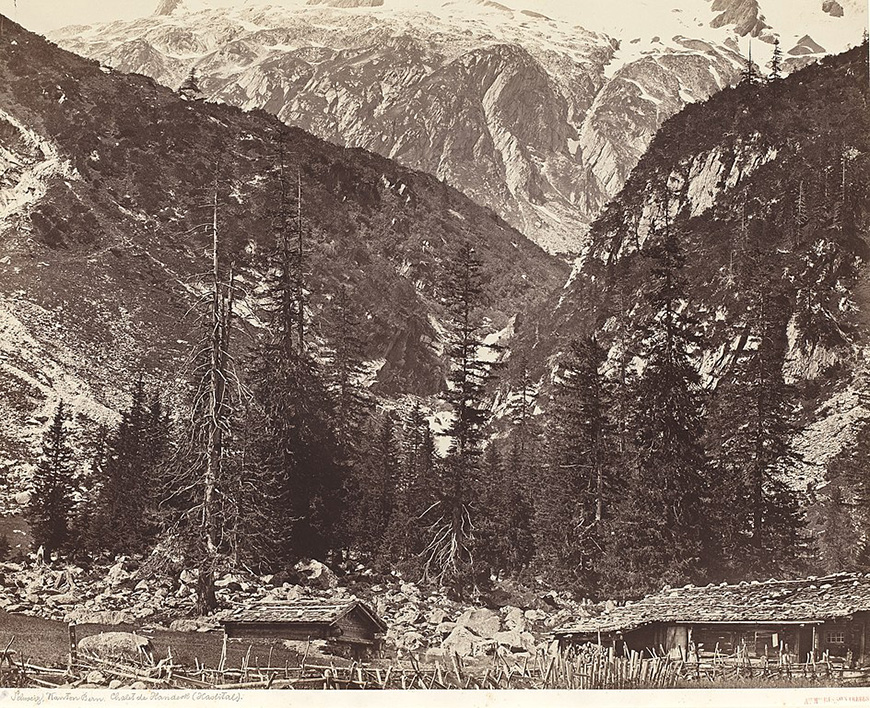
Credit: Louis-Auguste Bisson and Auguste-Rosalie Bisson, Robert B. Menschel Fund, National Gallery of Art, CC0, via Wikimedia Commons
Auguste-Rosalie Bisson (1826-1900) was a pioneering photographer of the 19th century, known for his panoramic views of landscapes and architectural wonders.
Born in 1826, Bisson’s use of large-format photography allowed for detailed and immersive images that captured the grandeur of iconic landmarks.
His photographs offered viewers a unique way to experience and appreciate the world’s cultural heritage.
Lise Sarfati
Lise Sarfati is a contemporary photographer known for her introspective and evocative portraits.
Born in 1958, her work often explores themes of identity, adolescence, and the complexities of human relationships.
Sarfati’s photographs invite viewers to delve into the emotional landscapes of her subjects, capturing moments of vulnerability and connection.
Louis Désiré Blanquart-Evrard
Louis Désiré Blanquart-Evrard (1802-1872) was a pioneering figure in the early history of photography, credited with popularizing the albumen print process.
Born in 1802, his innovations in printing techniques contributed to the widespread dissemination of photographic images.
Blanquart-Evrard’s work played a crucial role in shaping the accessibility and cultural impact of photography in the 19th century.
Adolphe Braun
Adolphe Braun (1812-1877) was a 19th-century photographer known for his pioneering work in commercial photography and color printing processes.
Born in 1812, Braun’s images spanned a wide range of subjects, from still life to landscape photography. His meticulous attention to detail and his dedication to color experimentation made him a prominent figure in the field.
Braun’s colorized images offered viewers a new way to experience and appreciate the visual world, marking a significant step forward in the evolution of photography.
Bruno Braquehais
Bruno Braquehais (1823-1875) was a 19th-century French photographer celebrated for his documentation of the Paris Commune and his contributions to early photographic techniques.
Born in 1823, Braquehais’s photographs of the Commune capture the tumultuous events and social upheaval of the time.
His work serves as a visual record of a pivotal period in French history, providing valuable insights into the political and cultural landscape.
Each of these photographers has left an indelible mark on the world of photography, contributing to its evolution and enriching our understanding of the human experience. Through their lenses, they have captured moments of beauty, significance, and emotion, creating images that continue to inspire and resonate with audiences around the globe.
What are some common styles adopted by French photographers?
French photographers, like photographers from any other country, have diverse styles and approaches to their craft. However, there are some common themes and styles that have been historically associated with French photography:
- Humanism Photography: This style emerged in France in the 1930s and focused on capturing the everyday life of people. Prominent humanist photographers like Henri Cartier-Bresson and Robert Doisneau documented the human experience in candid and unposed shots, often in black and white.
- Surrealism: French photographers have played a significant role in the Surrealist movement. Artists like Man Ray and Jacques-André Boiffard used photography to explore dreamlike and surreal worlds, often incorporating experimental techniques such as photograms and solarization.
- Documentary Photography: French photographers have a strong tradition of documentary photography. This style emphasizes capturing real-life events and situations with a focus on storytelling. Sebastião Salgado is a notable contemporary French documentary photographer known for his powerful images of social and environmental issues.
- Fashion Photography: France is a fashion capital, and French photographers have made significant contributions to fashion photography. Photographers like Helmut Newton and Guy Bourdin are known for their provocative and avant-garde fashion photography.
- Street Photography: Street photography has a rich tradition in France, with famous street photographers like Brassai and Willy Ronis capturing the essence of Parisian streets and their inhabitants. This style often involves candid shots of people going about their daily lives in urban settings.
- Landscape Photography: France’s diverse landscapes, from the picturesque countryside to the urban architecture of Paris, have inspired many landscape photographers. They often focus on the beauty and uniqueness of the French natural and built environment.
- Experimental and Avant-Garde: French photographers have been at the forefront of experimental and avant-garde photography movements. Artists like Man Ray and Dora Maar explored alternative processes and techniques, pushing the boundaries of what photography could achieve.
- Fashion Editorial Photography: French photographers have made significant contributions to fashion editorial photography, with their work appearing in magazines like Vogue Paris. This style often involves creating visually striking and narrative-driven images for fashion spreads.
- Documentary Portraiture: French photographers have a tradition of documenting people and their stories through portraiture. Photographers like Raymond Depardon and JR have created powerful portraits that capture the essence of their subjects and tell their stories.
- Fine Art Photography: Many French photographers have ventured into the realm of fine art photography, creating visually captivating and conceptually rich works that are exhibited in galleries and museums.

Check out these 8 essential tools to help you succeed as a professional photographer.
Includes limited-time discounts.
As the Content Manager of Shotkit, India Mantle brings with her a lifelong love for photography that she developed during her childhood, watching her father document their family moments with his Nikon EM. In her free time, you find her enjoying the awe-inspiring natural beauty of her home, Northern Rivers, Australia.





